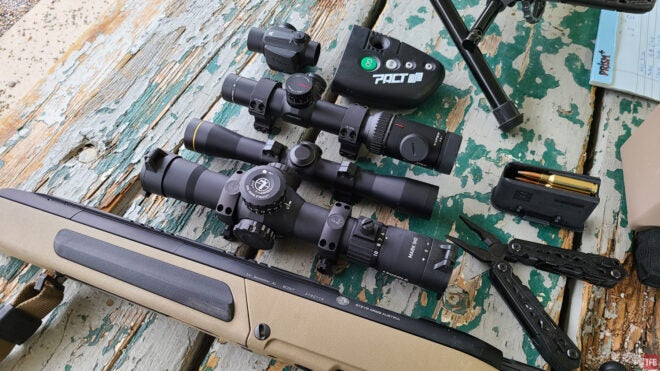We are back to continue this deep dive into the Steyr Scout rifle. Part 1 of this review looked at the features of the rifle and some accuracy testing. It also looked at some general features of the rifle and how it differs from a run-of-the-mill bolt gun. For Part 2, we will primarily look at optic selection.
Steyr @ TFB:
- What is the (Incredibly Rare) Steyr G62 Assault Rifle?
- The Steyr AUG 24″ HBAR Barrel Is Back!
- IDEX 2023: Steyr C9-A2 MF – An Often Overlooked Austrian Handgun
- Austria Begins Issuing Upgraded Steyr AUG Rifles
- [EnforceTac 2023] The New Lightweight Piston-Operated Steyr DMR
Disclosures should be included in any review so the audience has all the relevant information. Steyr provided the rifle. I am paying for the ammo. Throughout this article, I will use “Scout rifle” to refer to the Steyr Scout, and “scout rifle” to refer to the general concept.
Setup
With some baseline accuracy work out of the way, it was time to set up the gun for some real use. The SWFA scope works fine for accuracy testing duty, but a fixed 10x is absolutely the wrong optic for this rifle. But what scope is best?
Before playing with optics selection, I added a Magpul Rifleman Loop Sling (which I reviewed previously). That is a simple, lightweight, and multipurpose sling. I also used the Steyr thread adapter and a SilencerCo Harvester Evo silencer.
I wanted to control ammunition costs for this stage, so I loaded up 200 rounds of ammunition with the cheapest components in my stockpile. That meant a 140-grain Speer Hot-Cor bullet over Winchester StaBall 6.5 powder with mixed brass. 3-round groups with that load averaged about 1.5 MOA, so it is not a great load. But it is cheap and we were only shooting inside 100 yards. It shoots well enough, except for S&B brass which routinely got stuck in the chamber. The other five or six headstamps in the lot ran fine though, so that seems to be an ammunition issue rather than a rifle issue.
I also loaded some Hornady 140-grain BTHP bullets over H100V powder. Those groups averaged 0.8 MOA. The Scout is capable of far better accuracy than my plinking load would suggest!
Scout Rifles Have To Have Scout Scopes. Or Do They?
One of the biggest points of contention around scout rifles is the sighting system. Some purists refuse to use anything other than a long eye relief scope. There was even a comment on Part 1 taking umbrage with my use of non-scout scopes on the Scout.

Don’t worry, kids, there will be a scout scope appearance in this article.
I get it, scout rifles and scout scopes go together. But I am absolutely convinced that Jeff Cooper would have considered other optics if they were available when this concept was laid out. Here are some points of support for my argument:
First, Steyr built their Scout hand-in-hand with Cooper, and it has his blessing as the true commercial scout rifle. It has mounting points for a traditional scope and forward mounting points. If there was no possibility of using standard eye relief scopes on a scout rifle, those mounting points would not be there.
Also, the scout rifle concept was developed over time. Cooper did not decree the immutable design rules one day like Moses descending Mount Sinai with the 10 Commandments. Check out this article in American Rifleman to see some of that process. Cooper felt that, in the 1980s, “telescopes, instead of becoming stronger, smaller and faster to use have become larger, more cumbersome, more fragile and almost necessarily mounted too high above the bore.” In contrast, scout scopes were used “[with] both eyes open [so] the shooter sees the entire countryside as well as the cross-wire printed on his target.” He also felt it was “the fastest sighting arrangement available to the rifleman.” So the key elements of the optic are being small, rugged, fast, and usable with both eyes open. This sounds an awful lot like the design goals of red dot and reflex sights as well as low power variable optics (LPVO) and to some extent the mid-power variable optic (MPVO). Anyone trying to put a fast, rugged, both-eyes-open optic in 2023 is crazy to not think outside the scout scope box.
Another advantage of the forward-mounted scope was that it allowed for better rear sights. Most good rear sights on rifles are located on top of the rear receiver ring. This puts them in a location that generally would be incompatible with a traditional scope, which needs to put a scope ring in the same place. With flip-up sights on the Scout, this is also not an issue. You can have both.
Yet another reason to move away from long eye relief scopes is that there are not many of them anymore. Vortex makes one, Burris makes two, Leupold makes two, and there might be a couple of cheap ones out there as well. Now think about how many LPVO options there are. Vortex probably makes more LPVO scope models than there are models of scout scope for purchase on the market.
Finally, we come to the issue of loading with stripper clips. One of the main advantages of a forward-mounted scope was access to the top of the receiver for stripper clip loading. The Scout does not have an open-top receiver and it cannot use stripper clips. Also, no one is using those in a world where detachable box magazines are the standard.
Other arguments, like it being easy to carry a scout rifle around the action if the scope is mounted on the forend, are not unreasonable. But the cons far outweigh the pros in the era of modern optics. And while I may think Colonel Cooper would have looked at other options, you are free to disagree.
However, even if Cooper would not have changed his mind, there are so many good choices available in the world of optics that it seems silly to stay focused on that antiquated scope design. Don’t get stuck on a scout scope. If they were really that good they would have become popular on all sorts of guns rather than a niche item that only a few manufacturers still make.
What Is The Best Sighting System?
This brings me (finally) to the main thrust of this article. I wanted to try several types of optics to see how they performed in a controlled course of fire across multiple shooters. I asked some friends to help out with the test. One is a SWAT cop (who actually shoots), one is a 3-gunner (and law student), and one is an engineer (and my brother).

Steyr Scout with a range of test optics, including the Leupold Mk5HD 2-10×30, Vortex PST 1-4×24, Leupold 2.75x scout scope, and Vortex Sparc red dot.
The course of fire was pretty simple. Shooters started with the rifle at low ready, chamber loaded, and safety on. From the shot timer beep, the shooter had to hit cardboard torsos at about 15 yards, spaced on opposite edges of the range bay. This forced a wide transition with a lot of movement. The next shot was a steel plate at 100 yards followed by a clay pigeon also at 100 yards. Our initial plan had a longer final shot, but weather conditions made it too hard to call that hit. However, the final shot on the clay also resulted in many missed last shots. They were all very close, and many moved the clay without breaking it. Shooters had the option to shoot from any position, and those who were willing to go prone in the mud had the best results on the longer shots.
MPVO
The first optic was the Leupold Mark 5HD 2-10×30. I am calling this a Mid-Power Variable Scope, which may not be a perfect description, but it is a nice shorthand. 3 of the 4 shooters changed magnifications between the close and long shots, but the one shooter who did not change magnification had a much faster run. The throw lever worked well for changing magnification on the fly. The Leupold was quick on the close shots and very competent on the long shots. This was also the only optic where no shooter failed to finish the course of fire.
Average Time: 17.38

Steyr Scout with Leupold Mark 5HD 2-10×30, Magpul RLS, and SilencerCo Harvester Evo
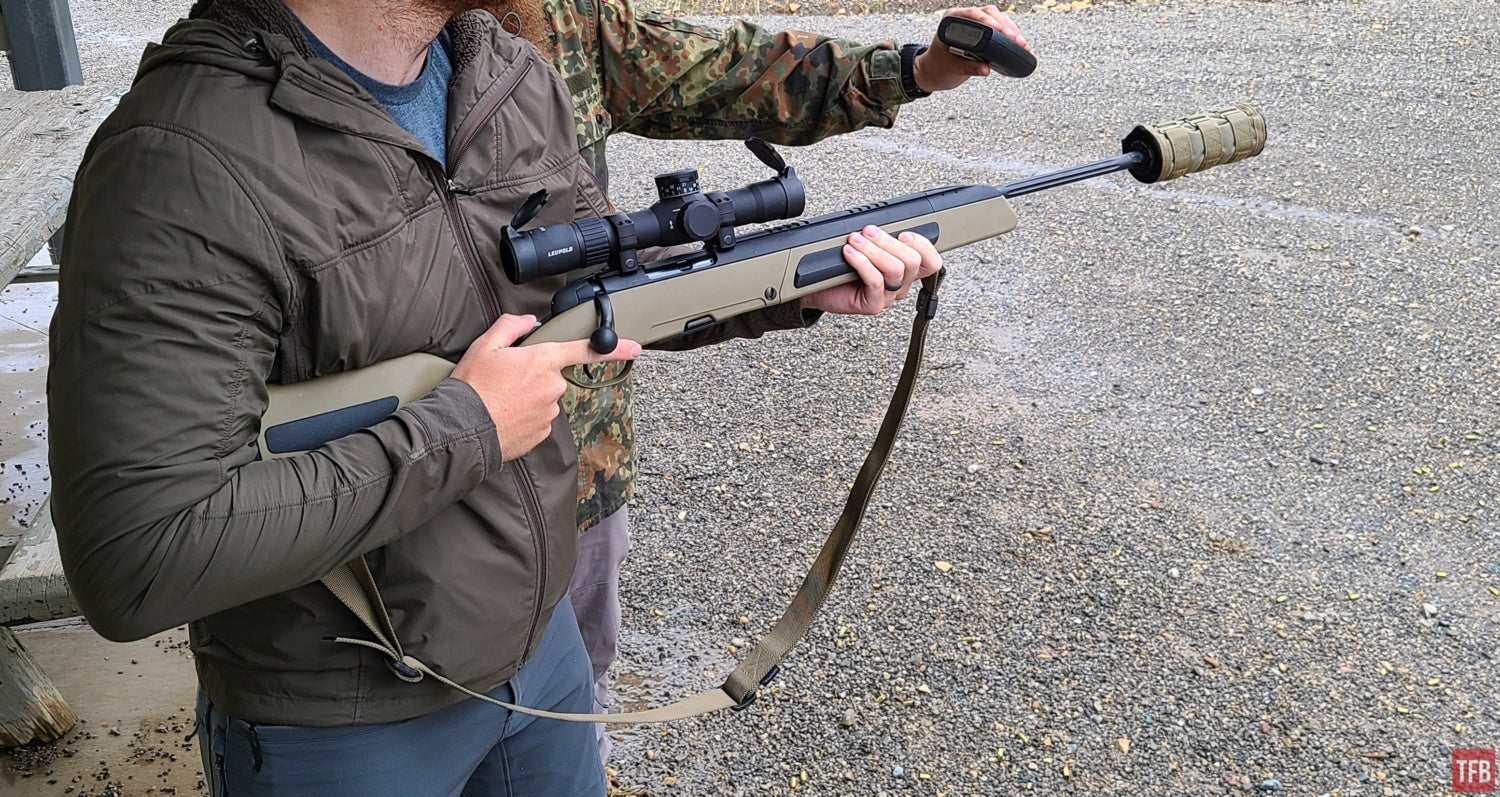
LPVO
Next up was the low-power variable scope. I used a Vortex Viper PST 1-4×24 to represent the LPVO category. This is not the newest or hottest scope in this class, but it is still a respectable option and was sitting on my loaner shelf. The lack of a throw lever really hurt the times put up by the LPVO, and a newer model with 6x or 8x magnification would have been helpful on the final shot.
Average Time: 20.58

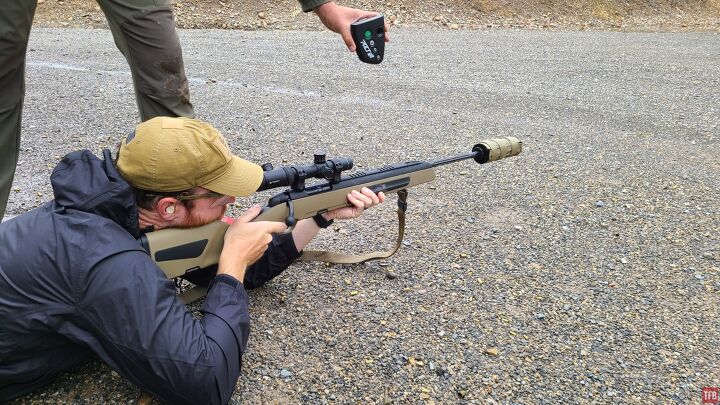
Scout Scope
Yes, we did actually use a long eye relief scout scope. Though the time result was a little faster than the LPVO, 3 of 4 shooters failed to finish the course of fire. The very thick center post of the reticle made it very hard to pick up the clay. This was the only optic where 3/4 shooters did not finish the course of fire. Small targets are the bane of this scope.
Average Time: 18.54
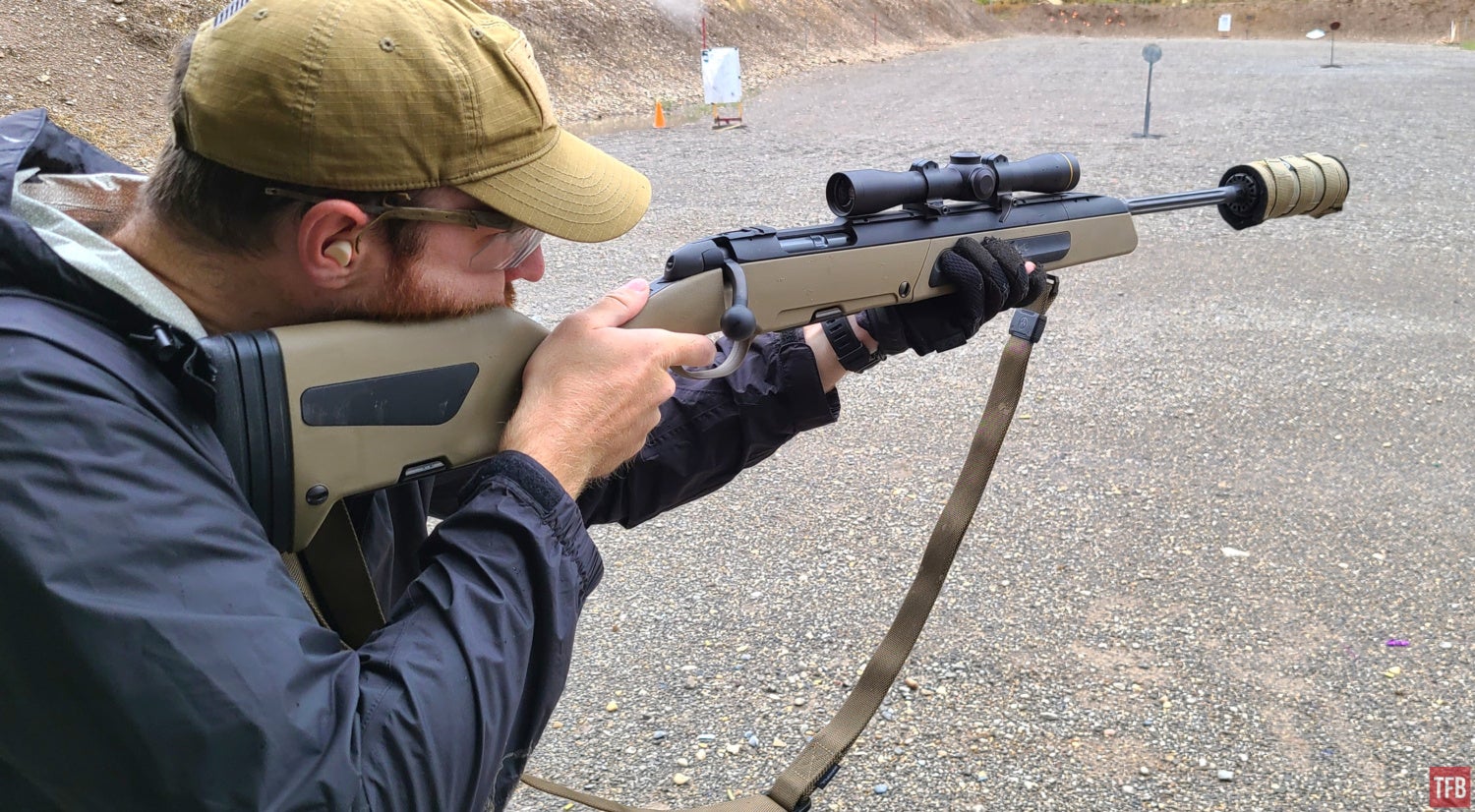


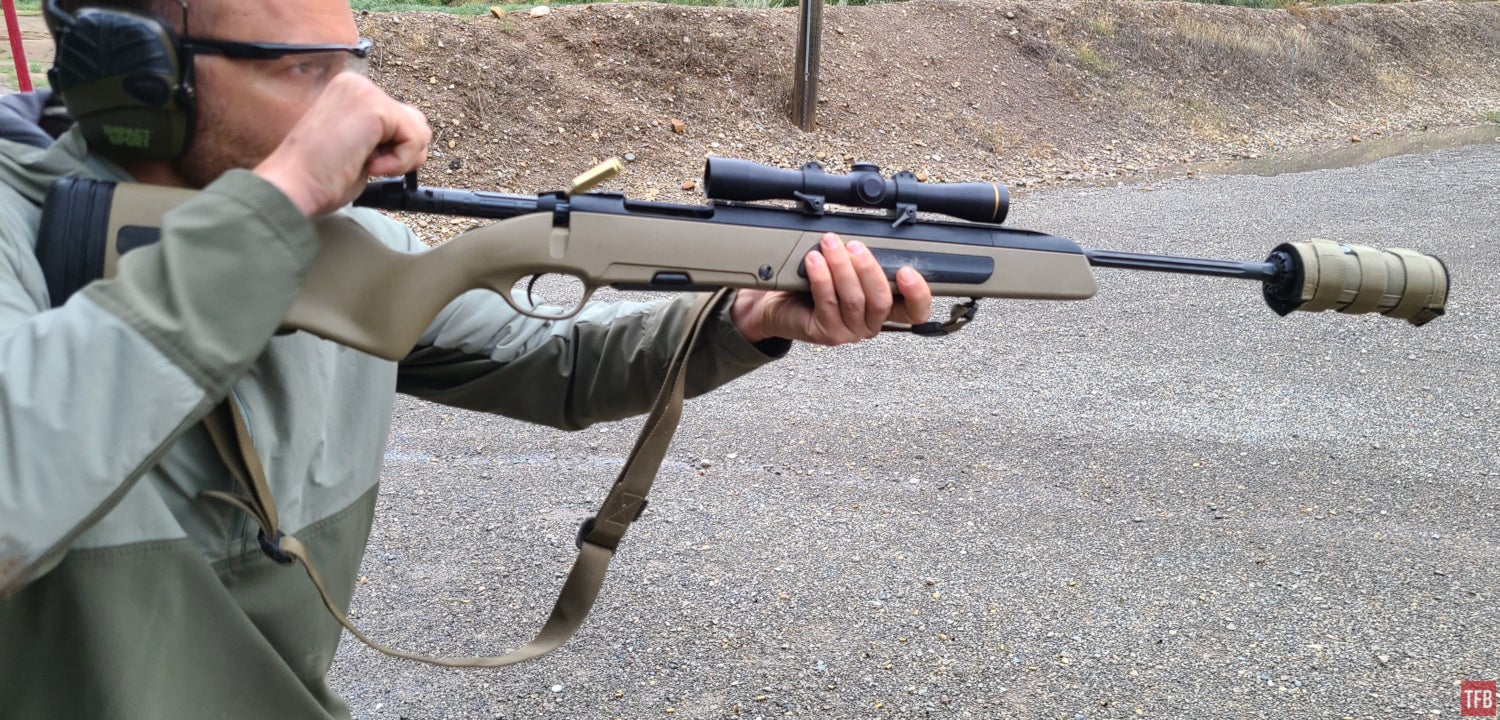

Red Dot
I would probably never use a red dot sight on a rifle like this but it was worth a try. It might make more sense for hunters back east or in the thick brush, but it is not the right choice for a 6.5 Creedmoor in the high desert. Even though the red dot had no magnification it was still very easy to hit the longer shots because the field of view is so open. The Vortex Sparc we used is not the most competitive option on the market, and the times might have been a little faster with a better red dot. But if the course of fire incorporated shots at smaller targets at longer ranges the red dot could have been a handicap.
Average Time: 12.81
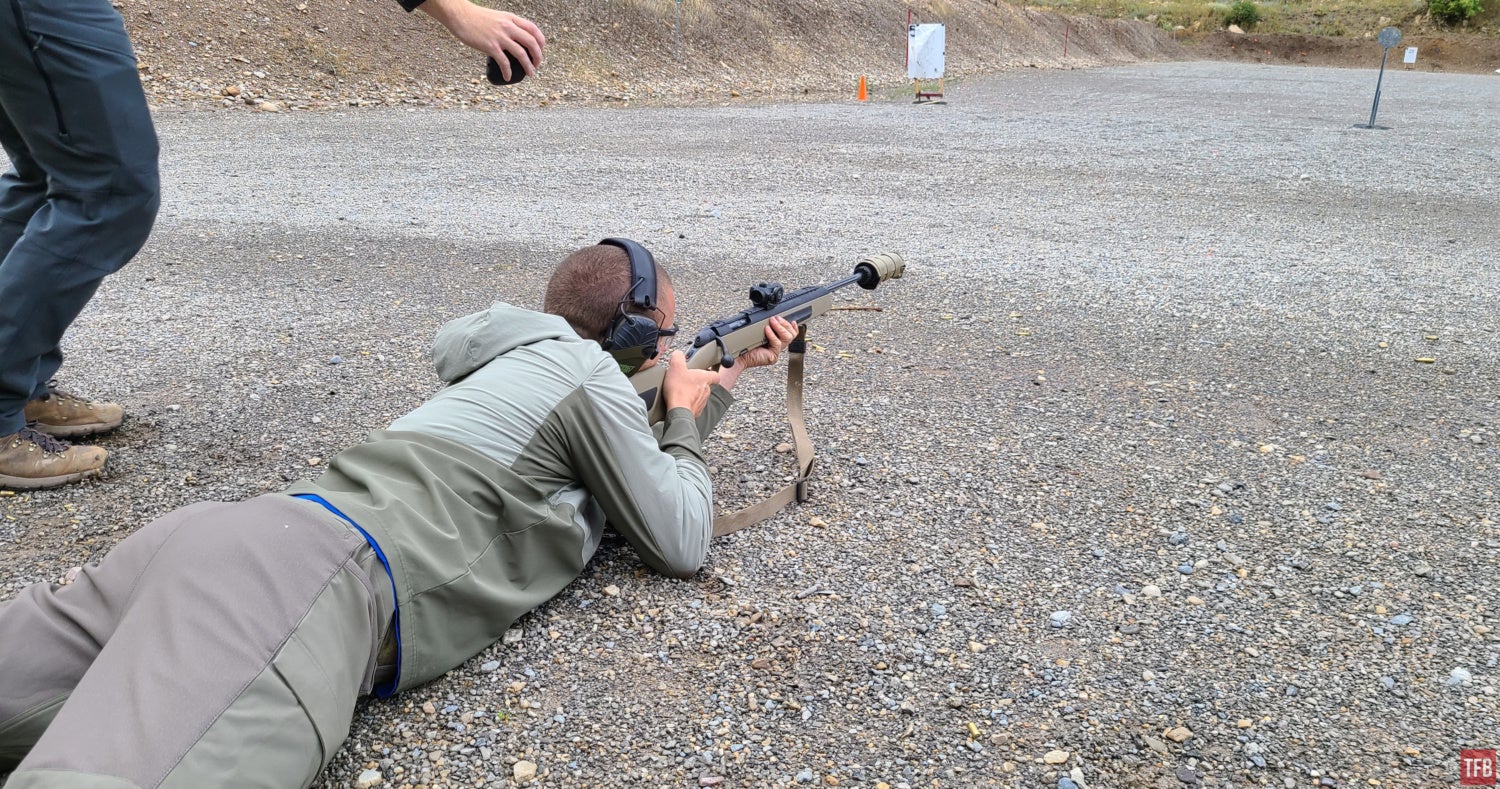
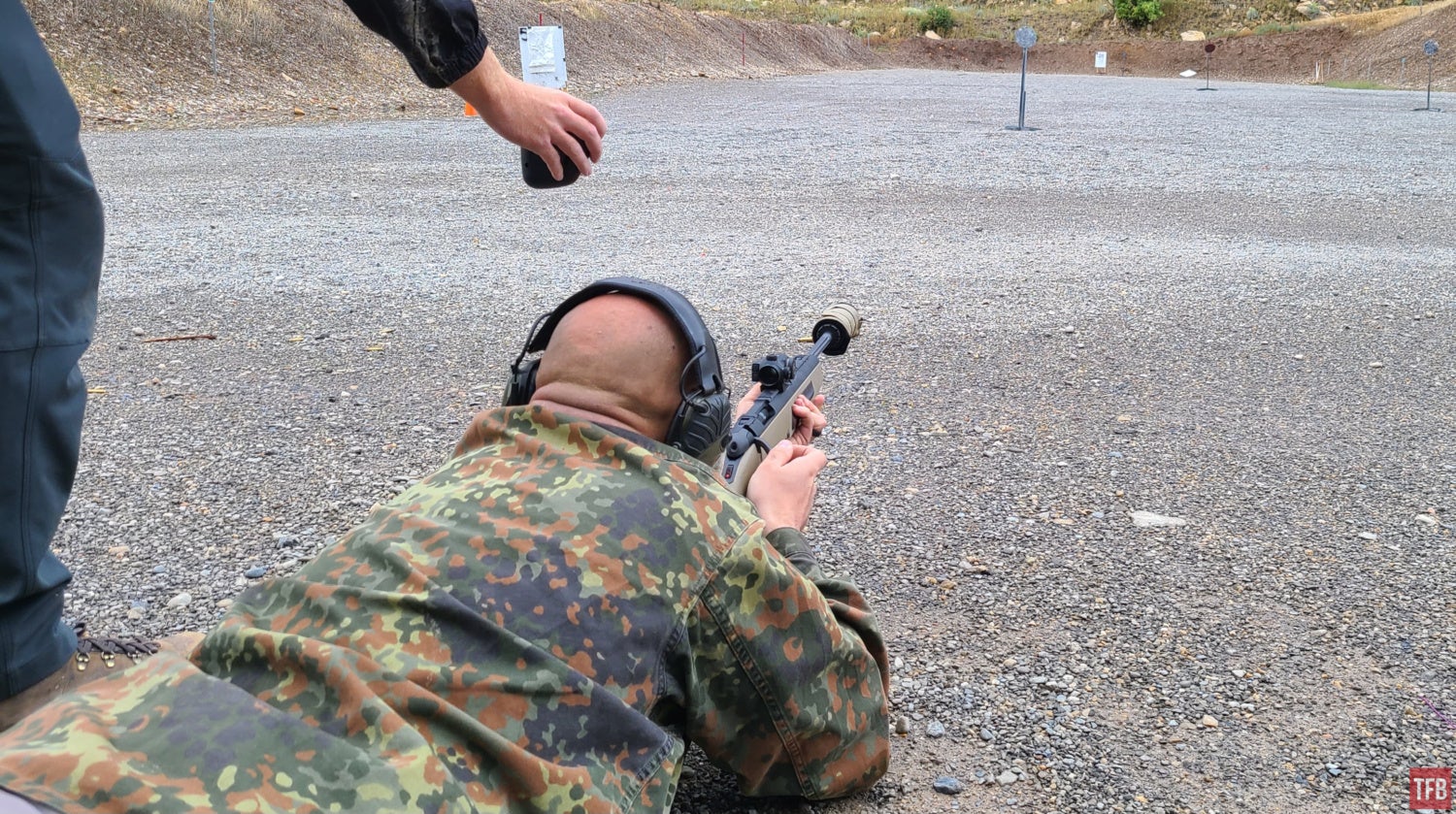


After Action Analysis
These results more or less confirmed my preexisting opinion about what optics make the most sense on the Steyr Scout. The scout scope was the consensus pick as the worst optic tested. There is little difference between the average times of the three magnified options, and the red dot was by far the fastest.
This test is not the final authority on the comparative performance of these various optics. There are all sorts of ways it could have been better. Adding more shooters and more runs on the course would add more data points and show better trends. A more scientific test would also use multiple optics of each category to better represent the strengths and weaknesses of a class rather than an individual scope.
Another source of error is the course of fire itself. This course of fire was all inside 100 yards, and adding courses of fire with longer shots would have been more advantageous for optics with more magnification. It also was structured in such a way that the last shot was often a miss so it was not a clean stop point. A better design would have featured a bullseye target with the score factored in as the last shot.

Between the course of fire, zeroing optics between swaps, and shooting for fun we went through about 150 rounds.
Conclusion
In summary, this was not a perfect test. However, with the range time and ammo budget constraints, this is what we have. Perhaps someday we could run a master retest with more optics, more shooters, and more time. But what this test lacked in scientific method it made up for in being extremely fun. The rifle ran great despite being wet, dirty, hot from firing, and a little muddy.

This was not a torture test, but the Steyr Scout had no problems while wet and dirty.
It is also a charmer, and it was fun to watch my friends develop an appreciation for this rifle over the course of the shoot. There were one or two little fumbles with the safety, which is a unique design, but only at the beginning of the test. The bolt is also smooth and easy to run in a hurry or on the move. No one short-stroked the bolt throw. A lesser action would have had issues and malfunctions, but the Steyr Scout was in its element being run like this.
I also have no idea what the “best” optic is for a Steyr Scout. Depending on the use case any one of these could be the right decision. And, in many ways, that is the beauty of the Scout rifle. It can do just about anything well enough to get the job done. Stay tuned for Part 3 for some reflections on the Steyr Scout after a hunting trip.
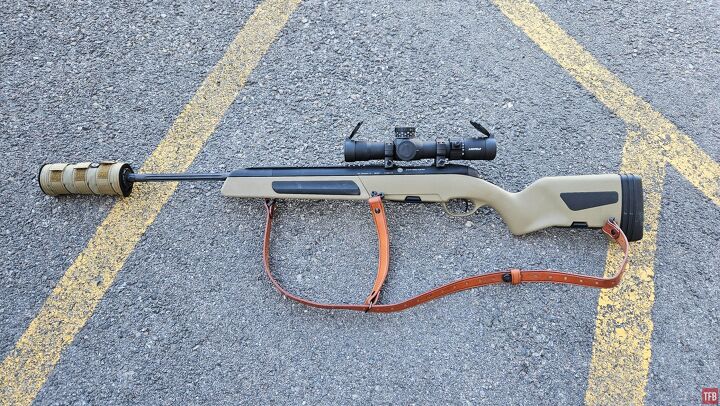
Steyr Scout set up and zeroed for hunting season.
We are committed to finding, researching, and recommending the best products. We earn commissions from purchases you make using the retail links in our product reviews. Learn more about how this works.
 Your Privacy Choices
Your Privacy Choices
